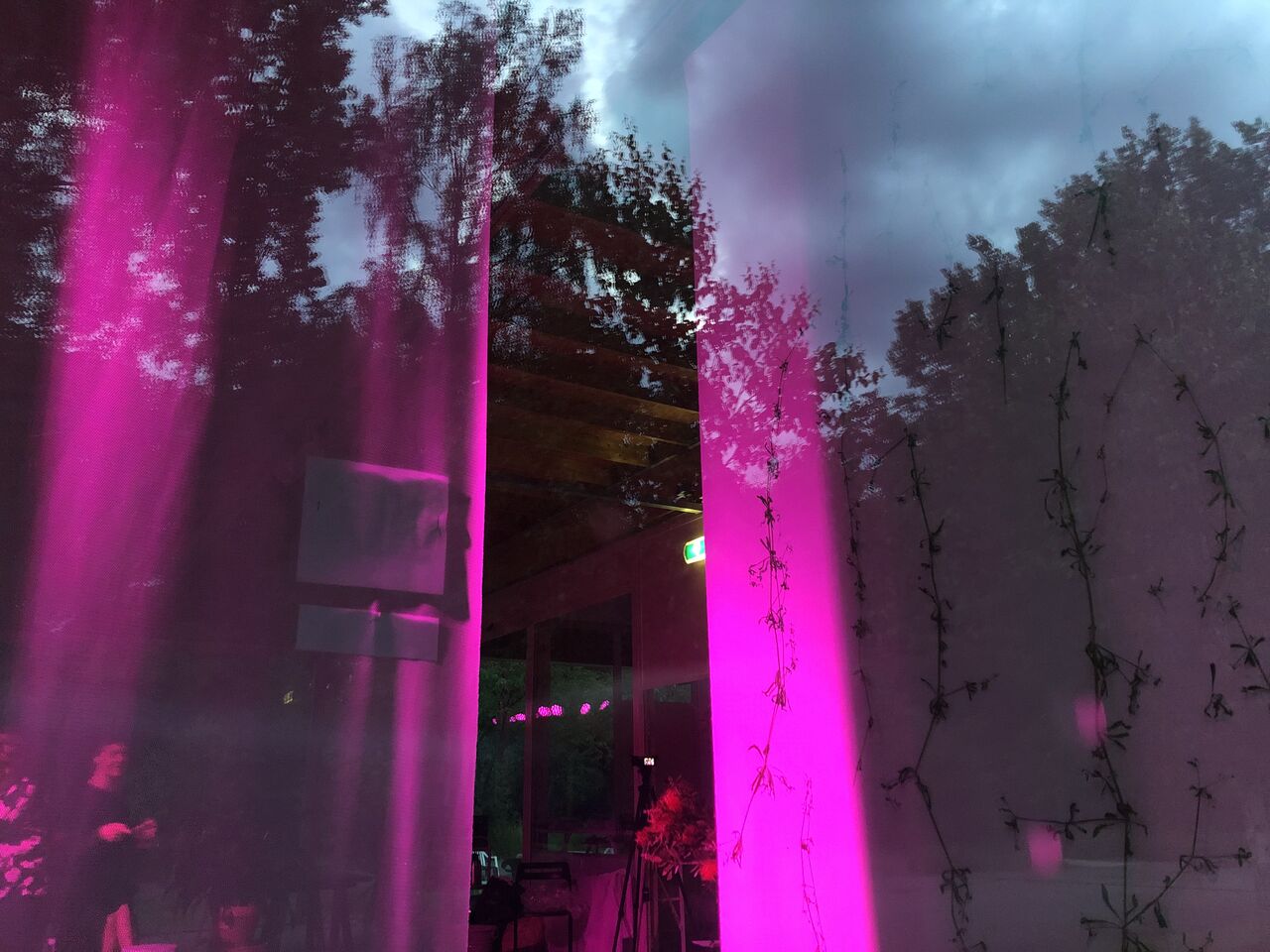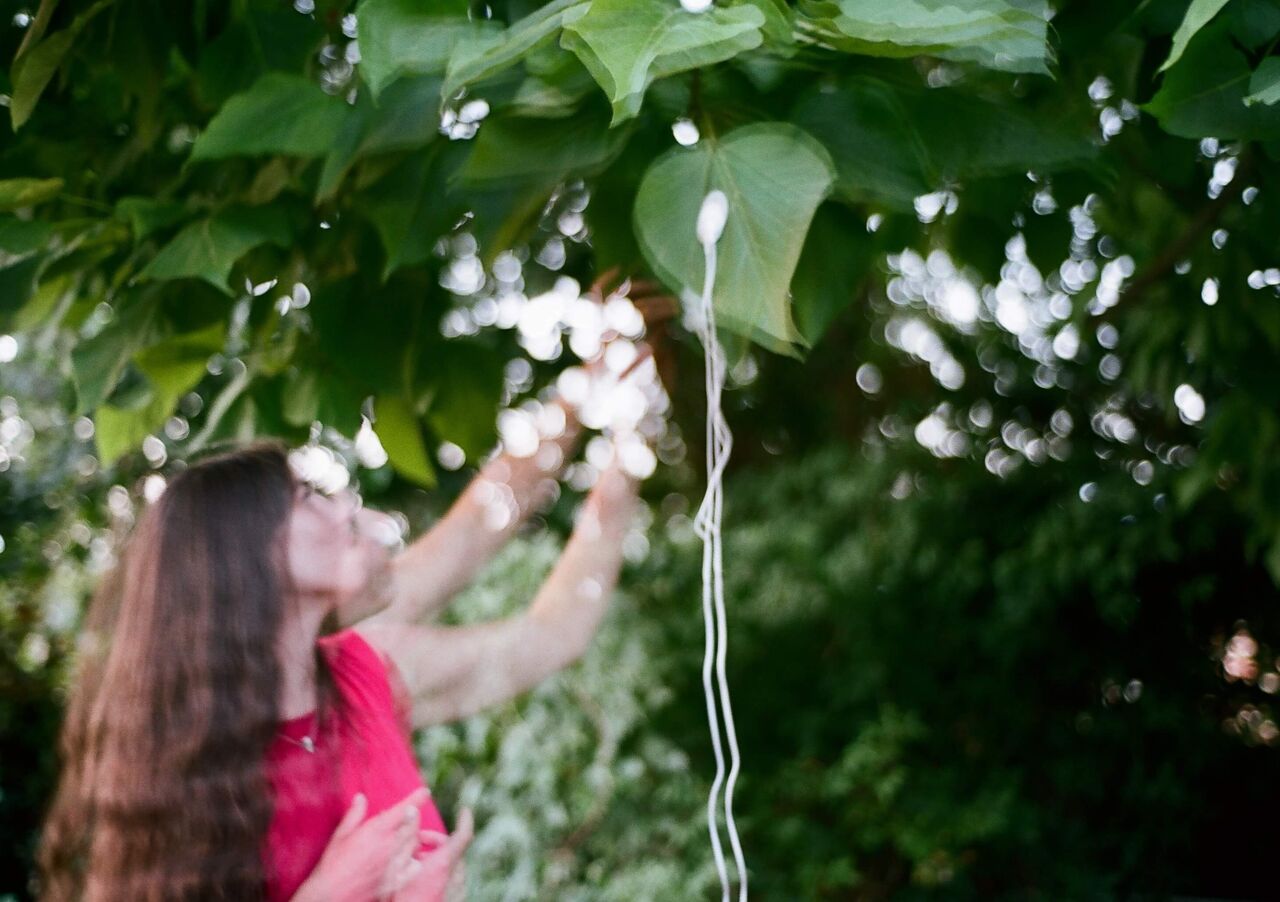Rooted Hauntology
This essay is a constellation of fragments about the experience of being with plants. It can be read in the proposed order, or recomposed into new constellations. It is to be read in the company of a more-than-human being the reader would like to create a new relationship with.
Abridged from Rooted Hauntology Lab: Attempts at Vegetal Curation and the author’s notes

Touch
Before we consume, burn, decorate and pay tributes with, or contemplate them, plants irradiate a meaning of their own. Each branch, shoot, and leaf located in a particular portion of a geranium, or of any other plant, is the outcome of a lived vegetal interpretation of the environment: the direction and intensity of sunlight, the amount of moisture in the air, and so forth. Plants’ living forms are their semantic structures. The human production of meaning is inevitably belated, supplementary, superadded to whatever we interpret, though, from our perspective, it stands out as the essential (in effect, the only) semantic construction.
Michael Marder, The Chernobyl Herbarium. Marder, Michael Michael and Anaïs Tondeur. The Chernobyl Herbarium: Fragments of an Exploded Consciousness.
The first time I saw a mimosa was at a market in Paris. I was fascinated. Delicately, I caressed the leaf. It folded around my finger and bowed downwards. The immediate reaction to my touch moved me more then I expected it to. There was an exchange, a reaction, visible and tangible. I felt like I existed.
Being with plants
The plants say nothing and this makes every observation wildly important. A leaf that folds or falls, the speed with which water is being absorbed. I have no tools to adequately comprehend the state of the plants. Does something like happiness exist for them? Is this an ambition I can hold for them? I catch myself in these melancholic and romantic thoughts. A friend sends me an e-mail with a poem by Wislawa Szymborska titled “The Silence of Plants”.
But how does someone answer questions
which have never been posed,
and when, on top of that
the one who would answer
is such an utter nobody to you?
Undergrowth, shrubbery,
meadows, and rushes…
everything I say to you is a monologue,
and it is not you who's listening.
A conversation with you is necessary
and impossible,
urgent in a hurried life
and postponed for never.
—Wislawa Szymborska, The Silence of Plants.
I start every day with observing and caring with my co-workers. Time gets stretched in these moments of observation and I can’t get rid of the feeling that time is disrupted and cracked. Being among the plants, the diversity of possible time experiences becomes obvious. A plant sometimes takes hours or days to react to an external impulse. A tree grows throughout numerous human generations.
Being-with — I attune myself to their presence, to photosynthesis, to the processes that transform CO2 into oxygen, the slow sucking up of moisture by the roots, the drop of condensation rolling off the leaf.
Being-with — I increasingly do less and less. I slow down and try to observe with full attention for detail. An observation without judgement, without the desire to get something from the other, a radical noticing. Sometimes it feels as if I slowly fold into the plant, my arms interlaced with their leaves as if I could slip through my own pores to feel the chlorophyll on their surface. They are starting to take over my thoughts.
Being-with — I focus on the silence that now, in between all of these plants in this small space, seems to be so much more dense.
Plant hauntings
The many hours together with the plants have made me attentive to the plants everywhere around me. Some majestic, others in a pitiful and almost forgotten state. I have the impression the plants are screaming at me from all sides. Their presence is not silent at all; they are loud in their inaudibility. The screaming loudness of the small round trees between the pavement and the street that should have stayed hidden is now uncovered. Something invisible is being seen. Once something that has been hidden gets unveiled you start to see it everywhere.
A flower through the crack in the pavement outside my door reminds me that this street once was a marshy field of grasses. With their loud silence, their impenetrability, and their radically different temporality, plants could be seen as spectral beings. Present and simultaneously ungraspable, they speak through generations. The plants in pots are haunting us with the absence of their ecosystem. Their communication systems are present, but inaccessible. I scan their leaves with biosensors, searching for electromagnetic fluctuations; I get a signal, but no meaning.

Vegetal institutions
Plants are active agents. They can be ruthless in their persistence, bring instant toxic death or a slow, almost unnoticed decay by suffocation. They use us, as much as we use them. But they do have different strategies of inhabiting the earth and collaborating to do so. How can the knowledge and agency of plants influence our workday, our collaborations, our organisations? What general plant strategies do we notice and which specific plants do we call to our aid and give space to act?
Could we imagine our institutions dormant? Our working days, our practices? Which conditions should we wait for, instead of force?
Could we imagine our contracts as careful descriptions and explorations of our interrelations with what is surrounding and supporting us?
Could we imagine the notion of authorship radically distributed? Acknowledging that our environment writes us, as much as we are writing it? How distributed should we then think it? Which matters matter? Which matters are mattering our thinking?
Could we imagine the decay of our organisations as a joyfully awaited moment for new saplings to shoot up?
Could we imagine our bodies—personal or institutional—as homes for many, many beings? Could we imagine our bodies—personal or institutional—to have healing properties for others? And how could we offer those?
Could we imagine our choices—personal or institutional—on an intergenerational scale? Could we imagine ourselves ruthless and persistent — not as individual stems, but as deeply- and widely-rooted networks?
Could we imagine the doses at which we become poisonous?
Herbal invocations
The nettle or Urtica dioica is a common and abundant plant in the regions of the European North-West. It is often the first plant to appear on an abandoned plot. Its preference for polluted and nitrate-rich soils makes it the ideal being to reseed the capitalist ruins. It metabolizes the pollution, which can not be found back in the picked leaves. Its roots grow very, very deep and rhizomatic—a stalk is but a small particle of a bigger entity—nettles endure and persist. Clothes made from nettles have traditionally been used to bury the dead. My childhood was filled with its stings. But its sting is a venom that heals. It has been widely used for culinary and healing purposes; it is known as a purifier of the bloodstream, relieving fatigue; and it can help people who are too nice and have difficulties in setting their boundaries wisely.
We invoke the nettle to set our boundaries within the capitalist demands for ever more extraction and production. Both of natural and human resources. We invoke the nettle to reseed the exhausted space of burn-out.
Mugwort, also called Artemisia vulgaris, is considered a protector of women and forest creatures. For people who farm or garden, it is an enemy — it survives any herbicide you can spray at it. The oils of the plant are toxic when taken in in large amounts over a long period. But in small dosages it is considered to assist with dreaming, imagining, and visioning. Those who use the mugwort are said to be able to live in several worlds at once. It expands the gaze to past and future — it makes the invisible visible and can help us stay and live in complexity. It can help us resist the tyranny of the constant now.
We invoke mugwort’s potential for change and persistence and pledge to act accordingly.

❧

